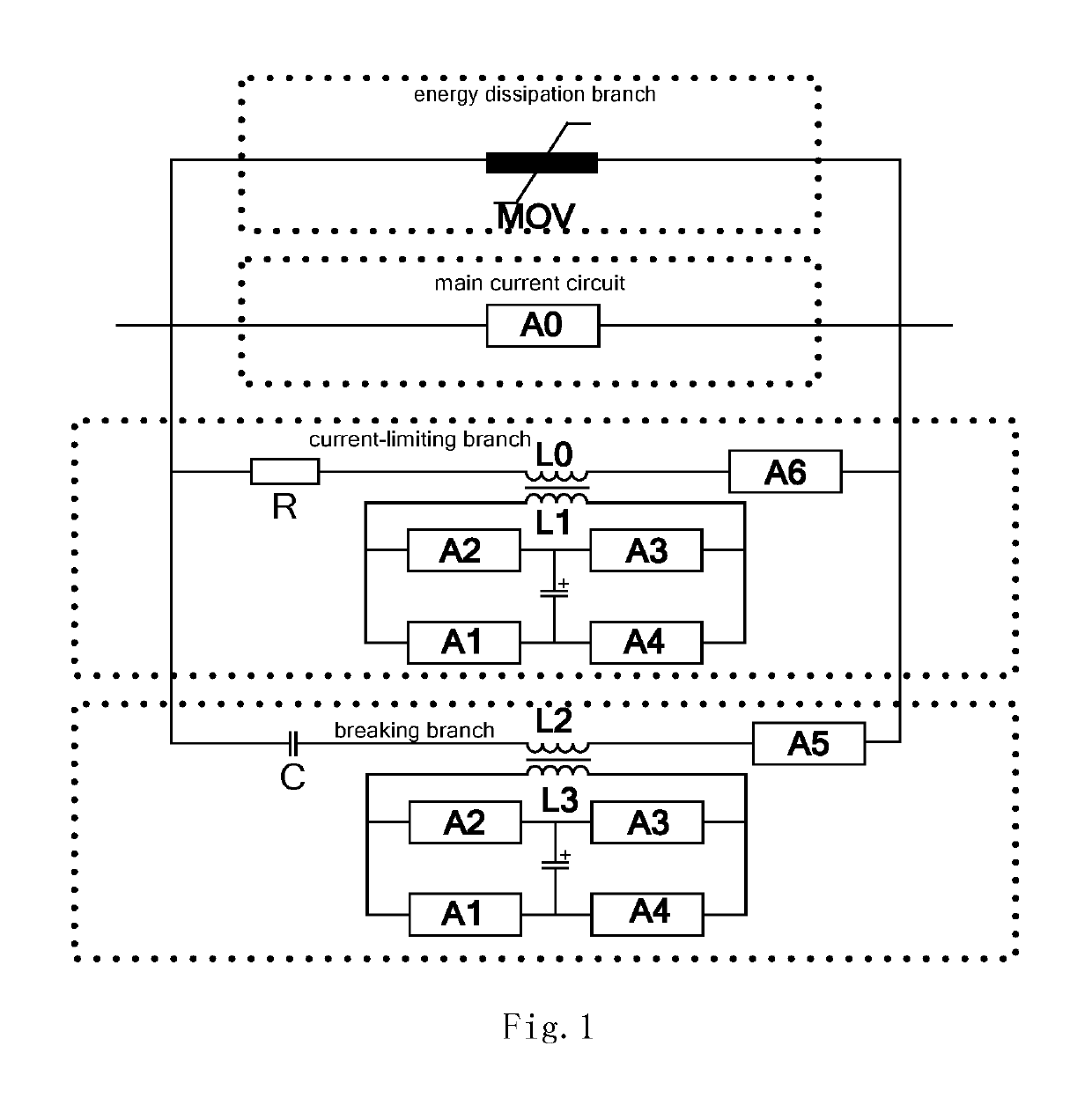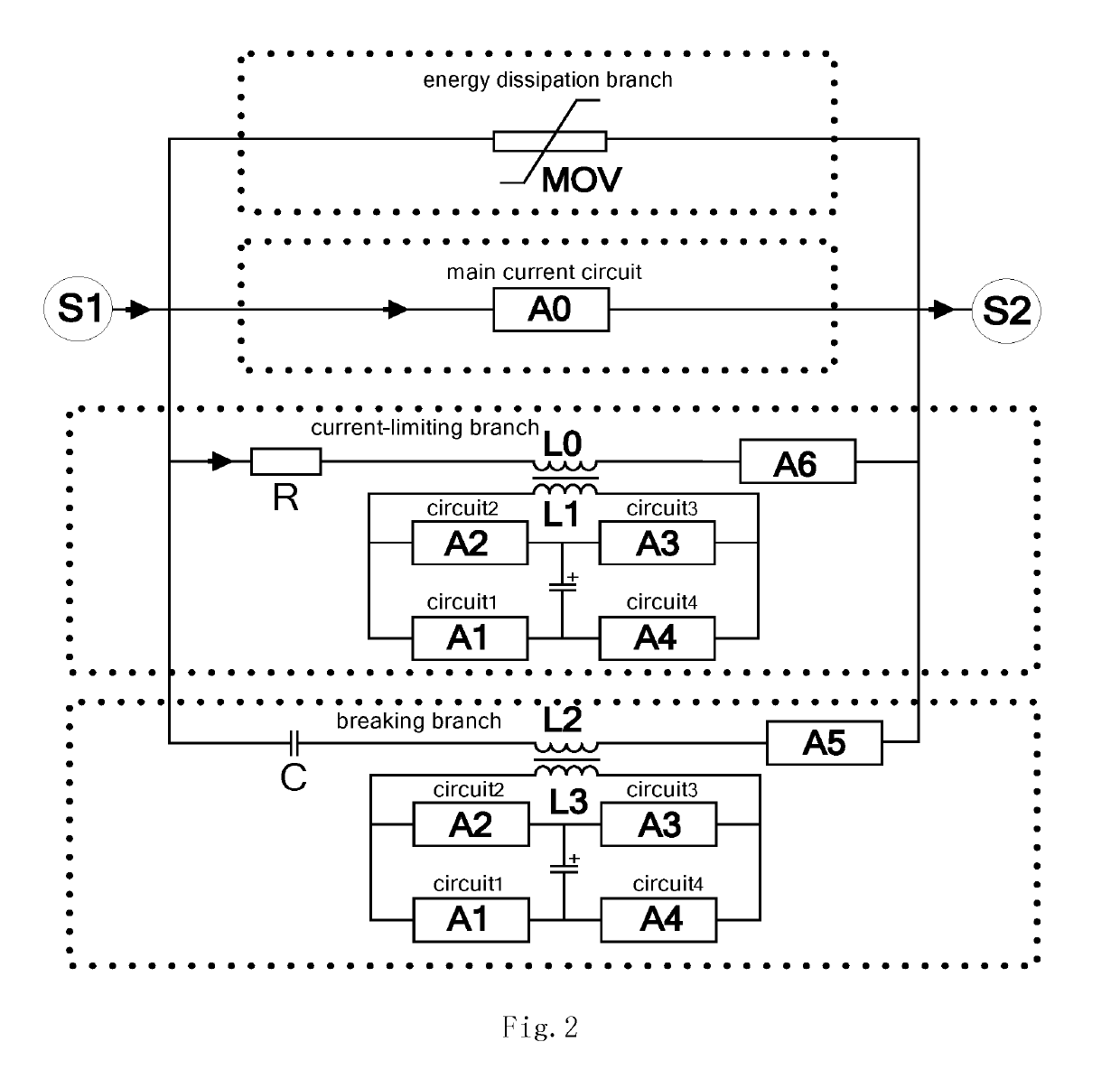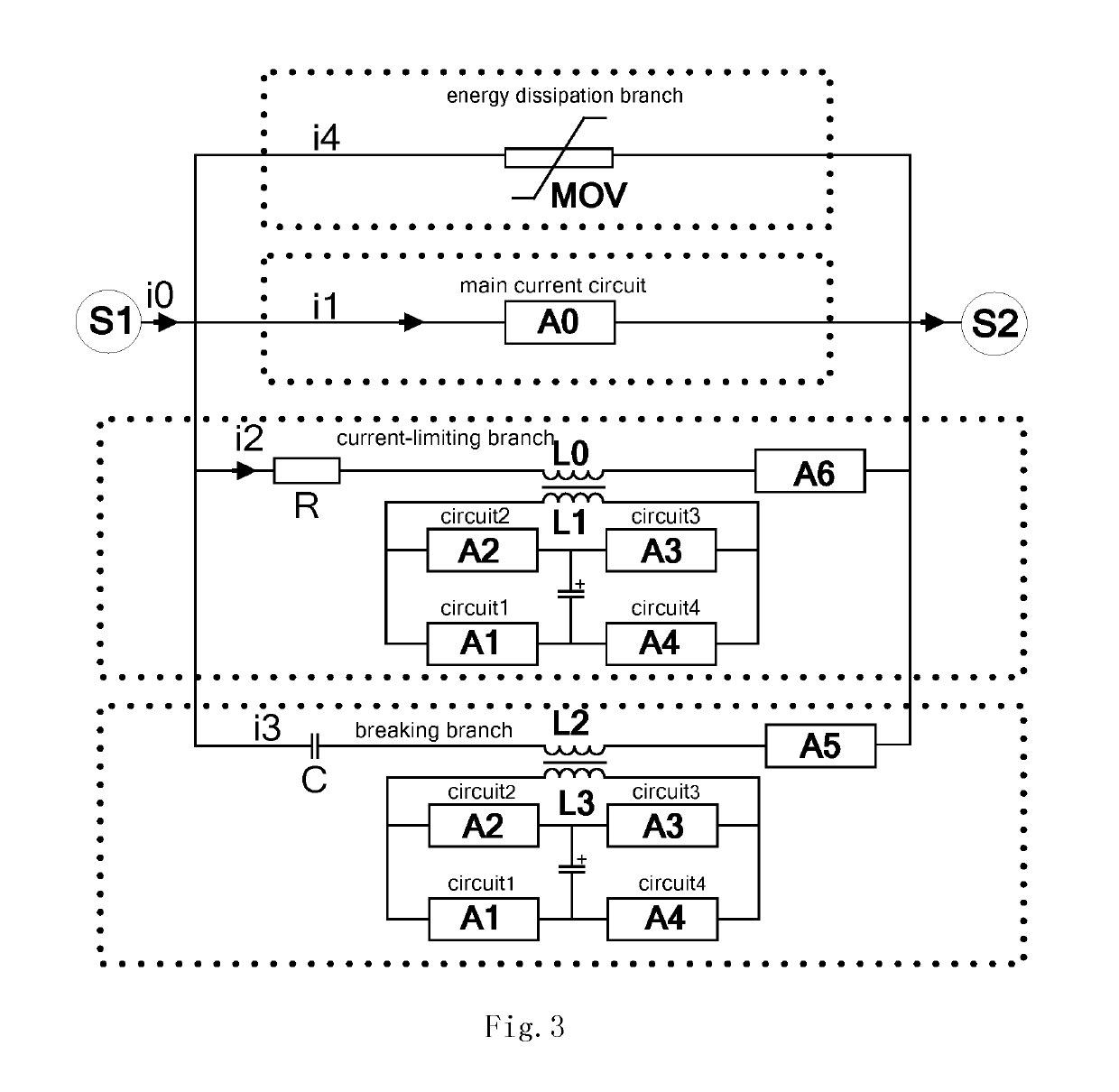DC circuit breaker combining magnetic induction transfer and resistance current limiting
a technology of magnetic induction transfer and resistance current limitation, applied in the direction of air-break switch, high-tension/heavy-dress switch, electrical apparatus, etc., can solve the problems of high control complexity and cost, unreliable breaking, restricting its promotion and application, etc., to achieve fast transfer speed, reduce volume and manufacturing cost of circuit breakers, and reduce the effect of volume and cos
- Summary
- Abstract
- Description
- Claims
- Application Information
AI Technical Summary
Benefits of technology
Problems solved by technology
Method used
Image
Examples
Embodiment Construction
[0041]To enable those skilled in the art to better understand solutions of the present invention. Hereinafter, the technical solutions in the embodiments of the present invention will be described in a clear and comprehensive manner in conjunction with FIGS. 1-13 in the embodiments of the present invention. Apparently, the embodiments as described are only part of embodiments of the present invention, rather than all embodiments. Based on the embodiments in the present invention, all other embodiments obtained by a person of normal skill in the art without exercise of inventive work should fall within the scope of the present invention.
[0042]The present embodiment provides a structural diagram of a circuit breaker body. With FIG. 1 as an example, the circuit breaker comprises a main current circuit, a current-limiting branch, a breaking branch, and an energy dissipation branch.
[0043]In order to better illustrate a separating procedure of a circuit breaker, as shown in FIG. 2, the pr...
PUM
 Login to View More
Login to View More Abstract
Description
Claims
Application Information
 Login to View More
Login to View More - R&D
- Intellectual Property
- Life Sciences
- Materials
- Tech Scout
- Unparalleled Data Quality
- Higher Quality Content
- 60% Fewer Hallucinations
Browse by: Latest US Patents, China's latest patents, Technical Efficacy Thesaurus, Application Domain, Technology Topic, Popular Technical Reports.
© 2025 PatSnap. All rights reserved.Legal|Privacy policy|Modern Slavery Act Transparency Statement|Sitemap|About US| Contact US: help@patsnap.com



